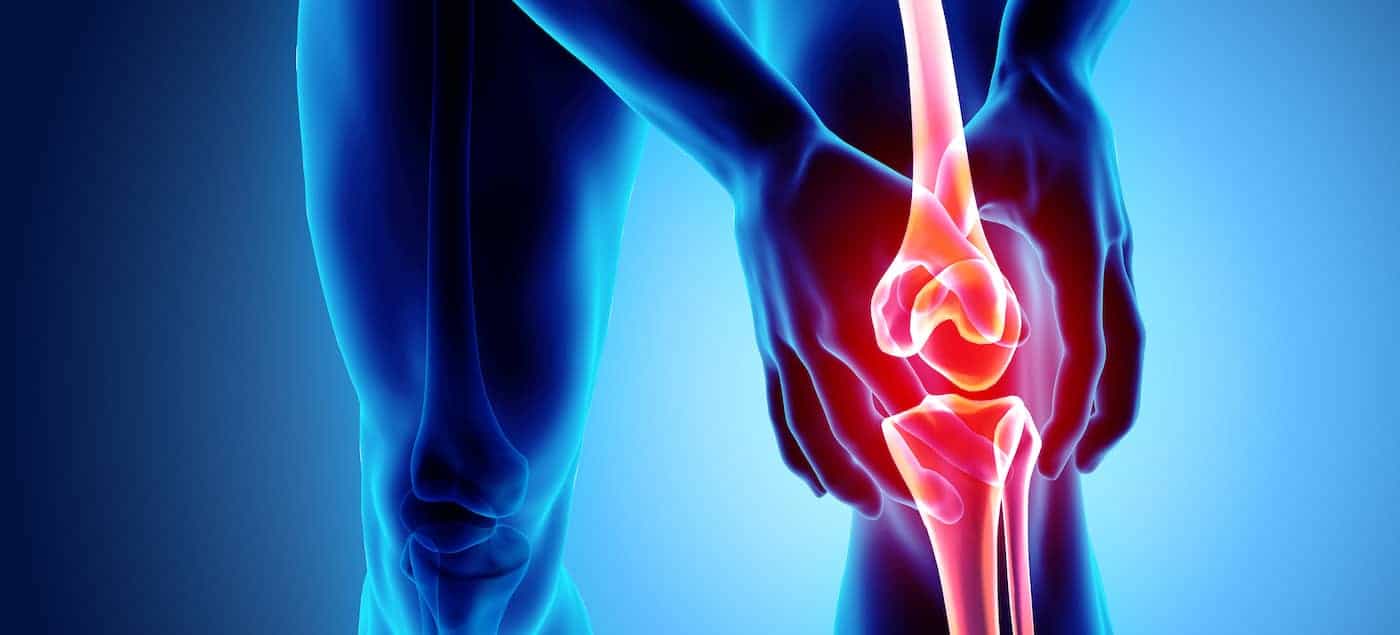Have you ever wondered how you get movement when your bones are so solid? It’s because bones join with other bones so that they can move like a hinge – at our joints.
Other bone problems
Here’s an image of a typical shoulder joint.
The ball part of the joint is the arm bone and the socket of the joint is the shoulder blade. Slicing the shoulder straight down, the long bone of the arm and the shoulder blade can be seen. You’ll also see that these bones are lined with a bit of cartilage (purple layer). They have quite a good blood supply and can withstand some shock.
In synovial joints there are ligaments that help hold the bones together. The ends of the bone are surrounded by a joint capsule that’s flexible and lined with a thin tissue called synovial membrane, whichproduces the fluid that acts as a lubricant similar to the oil in the joint of a car. In the human body we have a lubricant called synovial fluid, which is so special that it can actually change its viscosity or thickness depending on the forces applied to it. This fluid fills the spaces between and around the bone ends so that these bony surfaces can glide and move without much friction.
Joints enable movement between our bones and give stability. They also allow us to maintain the flexibility that allows us to move. A layer of cartilage lining the surfaces of the bone within a joint provides shock absorption so the bones don’t suffer as much stress. It’s like having shock absorbers in cars.
You also have extra cartilage in some of your joints, such as the shoulder, hip and knee, that deepen the joint socket so that the joint is less likely to come apart, or dislocate, and can take additional stress.
Joint injuries and ligament injuries
An injury to a joint might involve bony cartilage, bone, ligament, fluid inside the joint or a capsule inside that joint. Gradual damage to the joint capsule, bony cartilage or bone is often from some kind of arthritic condition. But sudden force to a joint will cause a ligament sprain.
Ligaments are the ‘bridges’ that help keep your bones together and an injury to a ligament is called a sprain. Ligaments can be overstretched and if you overstretch them too much, you’ll tear them. And when they tear, you no longer have stability between the two bones they attach to. It’s really important to try to regain that stability if you haven’t completely torn the ligament, or replace the stability if it’s completely torn.
Cartilage is a smooth shock-absorbent layer covering the bone of most joints. There are also specialised cartilage structures within particular joints, such as the knee joint, which can be torn.
You’ll often hear about tears in knee cartilages because they have a little bit of flexibility. Sometimes the cartilages end up getting stuck between the thigh bone and the shin bone of the knee joint and become torn as the knee twists. It’s like you placinga rubbertap washer between two moving parts and then grind it down whilst it is sandwiched between the two surfaces. The rubber might become torn.
When a rotationforcein the knee joint is too strong,the (cruciate) ligament can be overstretchedsand can get inflame and the knee cartilages may also get torn, especially if leg is taking a lot of body weight.The capsule of the joint, which makes the fluid,can also become irritated and inflamed. The same thing can happen to bone cartilage (which lines the bone surfaces in the joint)but it doesn’t tend to get inflamed quite as readily as ligament or capsule, and that’s what we call arthritis. Arthritis is often attributed to wear and tear. There’s actually over 100 different causes of arthritis. It can sometimes, but not always, be managed by a physio without any medications (or other pharmaceutical intervention)
What we do to treat joint injuries and ligament injuries
In the case of ligaments, we can apply particular electrotherapy equipment to help with the healing of joints and we give appropriate advice. So if you’ve sprained a ligament or have any kind of inflammation, we’d usually recommend that you apply the R.I.C.E rule, which is Rest, Ice, Compression and Elevation (if it’s from an acute or sudden injury).
Rest is a relative instruction depending on what sort of injury you have. If it’s a very severe injury you may have to completely stop using it. If it’s type of joint that usually takes weight, for example any of the lower limb joints, you may need to stop putting any weight on it and stop walking for a period of time.
If the injury is only mild, then we might help protect it by recommending that you not walk on it too much, not use it too much or perhaps applying a splint of some kind (or a sling if it’s an arm joint).
We may apply tape to help support the joints, allowing a bit of movement. In wrist sprains or shoulder sprains we might tape it to avoid too much stress on the joint (but enabling some stress, because some stress provides a stimulus for the body to heal its structure).
This is called stabilising the joint. Weaim to stop the parts from moving excessively so that the movement doesn’t keepoverstretching and damaging the healing tissue. But as the body heals, we want to introduce more movements into the parts so the joint will move properly and regain strength.
The body adaptsby strengthening where it needs it the most. If you don’t provide the ‘messages’ from the increased stress on the area, there may be a uniform degree of healing. But you might actually be better off having a stronger structure in the places where you take the most stress.
To get these joints moving,wemay use hands-on treatment such as joint mobilisations or manipulations. We might apply traction where we separate the joint surfaces, either with our hands or with certain pieces of equipment – or even offer you the use of certain pieces of equipment that you may or may not be able to take home.
And, of course, there’s exercise. We’ll look at what sort of exercises you need for any stage along the healing of that joint and give you advice like how to exercise, how much to exercise and the load and frequency of exercise you need to heal your particular injury.


